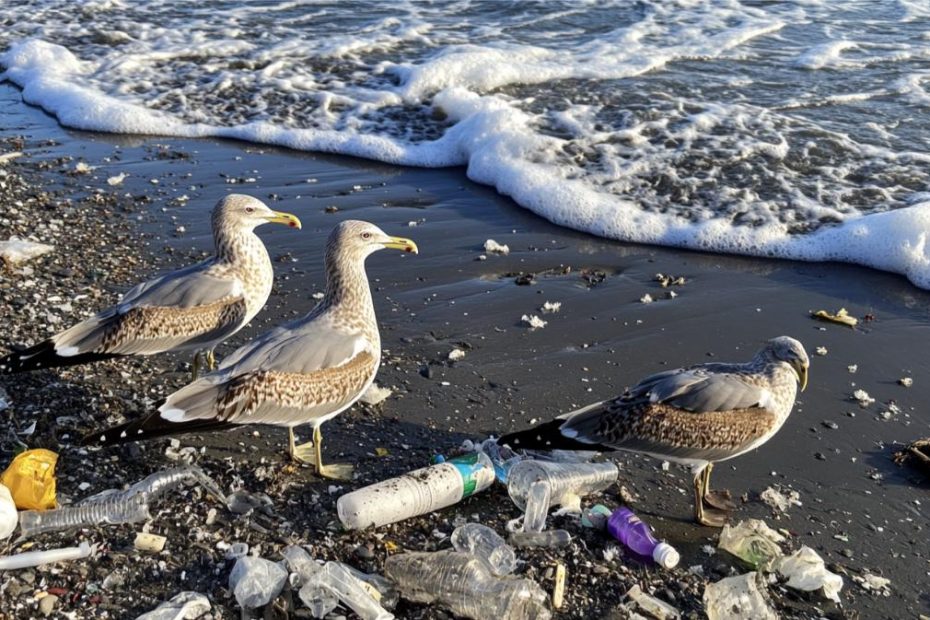Imagine a sea turtle swimming through crystal-clear waters, only to mistake a plastic bag for a jellyfish. This scenario is becoming all too common in our oceans.
Every year, 11 million metric tons of plastics enter our ocean, threatening marine life in ways we’re only beginning to understand.
You might think that plastic pollution only affects far-off beaches, but it’s closer to home than you realize.
From the fish on your plate to the water you drink, plastic has infiltrated every aspect of our lives – and the lives of the animals we share this planet with.
But don’t worry! There’s hope on the horizon. By understanding the problem and taking action, you can help turn the tide on plastic pollution.
Are you ready to dive in and make a difference?
Key Takeaways
- Plastic pollution poses a severe threat to marine animals, affecting their habitats and health.
- The impact of plastic waste extends beyond oceans, reaching our food and water supplies.
- You can contribute to solving the plastic problem through simple everyday actions and choices.
Plight of Marine Life Amidst the Plastic Deluge
Plastic pollution is wreaking havoc on our oceans and freshwater systems. You might be shocked to learn how this man-made disaster affects countless marine creatures, from the tiniest plankton to majestic whales.
Choking Oceans: The Toll of Plastic Waste on Marine Biodiversity

Imagine trying to swim through a soup of trash. That’s the reality for many marine animals today. Our oceans are drowning in plastic, and it’s not a pretty sight.
- Fish are mistaking colorful plastic bits for food
- Seabirds are feeding plastic to their chicks
- Coral reefs are being smothered by floating debris
You’d think twice about taking a dip if your local beach looked like a landfill, right? Well, that’s exactly what’s happening to our underwater friends.
Microplastic Menace: Ingestion and Accumulation in Aquatic Ecosystems
Think those tiny plastic beads in your face wash are harmless? Think again! These sneaky little troublemakers, called microplastics, are causing big problems.
- They’re small enough for even the tiniest creatures to eat
- They absorb toxins like a sponge
- They’re working their way up the food chain
You might be munching on microplastics in your seafood dinner without even realizing it. Yum, right?
Tangled Turtles: The Critical Impact of Debris on Marine Vertebrates

Ever tried swimming with a plastic bag wrapped around your flippers? It’s not fun, trust us. Sea turtles and other marine vertebrates are facing this challenge daily.
Plastic debris can:
- Entangle animals, restricting movement
- Cause injuries and infections
- Lead to drowning or starvation
Next time you see a turtle-shaped balloon, remember: real turtles don’t find plastic quite so festive.
Beyond the Sea: Plastic Pollution in Freshwater Habitats
Don’t think freshwater critters are off the hook! Rivers and lakes are also choking on plastic waste.
- Fish are ingesting microplastics in rivers
- Turtles are getting trapped in plastic bags in lakes
- Plastic is altering freshwater ecosystems
Navigating Solutions: Human Efforts to Free Nature from Plastic
People are tackling plastic pollution with creativity and determination. From scientific studies to policy changes and personal habits, we’re making progress in freeing nature from plastic’s grip.
Fishing Out the Facts: Studying the Scope with Scientific Precision

Scientists are diving deep to understand plastic’s impact on wildlife. The National Oceanic and Atmospheric Administration is leading the charge, tracking how plastic affects sea creatures big and small.
Did you know that even tiny hermit crabs are feeling the pinch? These little guys are getting stuck in plastic bottles on beaches. It’s not just a day at the beach gone wrong – it’s a serious threat to their survival.
Here’s a quick look at some affected critters:
- Sea turtles mistaking plastic bags for jellyfish
- Seabirds with stomachs full of bottle caps
- Fish tangled in six-pack rings
From Policy to Practice: Conservation and Urban Planning
Cities are stepping up their game in the fight against plastic. You might see new recycling bins popping up or plastic bag bans at your local stores. These changes aren’t just for show – they’re part of a bigger plan to protect our furry and finned friends.
Urban planners are getting creative too. They’re designing cities with wildlife in mind, creating green spaces that help animals avoid plastic traps. It’s like building a plastic-free highway for critters!
Some cool initiatives include:
- Rain gardens that filter out plastic before it reaches rivers
- Wildlife corridors that help animals avoid urban plastic hotspots
- Beach clean-up programs that protect coastal habitats
Small Choices, Huge Difference: Reducing Single-Use Plastics
You’ve got more power than you think! Every time you say no to a plastic straw or bring your own shopping bag, you’re giving nature a helping hand.
Want to up your game? Try these easy swaps:
- Metal water bottle instead of plastic
- Reusable produce bags at the grocery store
- Beeswax wraps instead of plastic wrap
Remember, cutting back on single-use plastics can make a big splash. If everyone in the U.S. used just five fewer plastic straws per year, we’d keep over 1.5 billion straws out of landfills and oceans. That’s a lot of happy fish!
